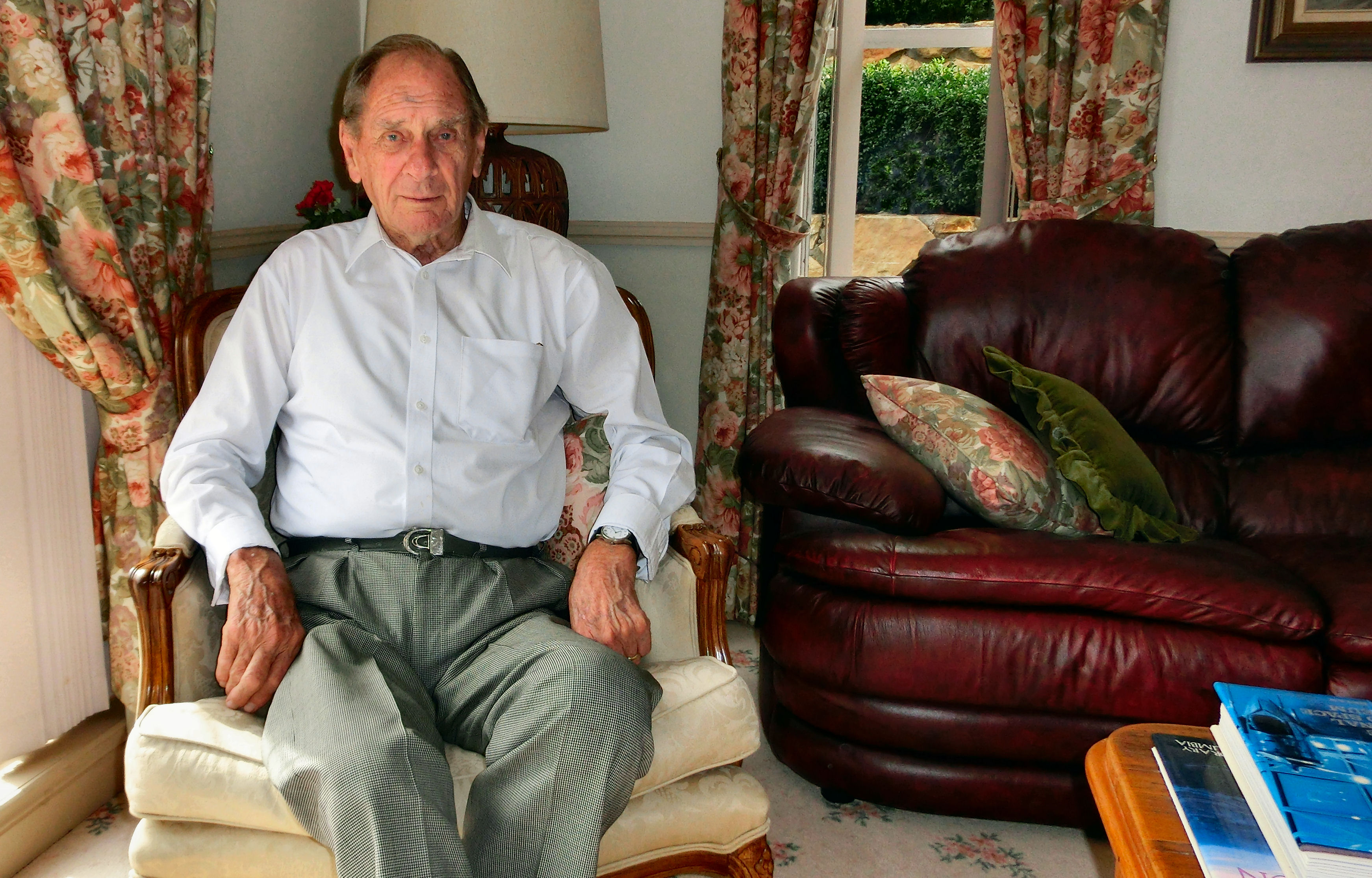|
|
||||||||||||||
|
Radschool Association Magazine - Vol 46 Page 7 |
||||||||||||||
|
Privacy Policy | Editorial Policy | Profit Policy | Join the Association | List of Members | Contact us | Index | Links |
||||||||||||||
|
My Story! |
||||||||||||||
|
Back Go to page: 1 2 3 4 5 6 7 8 9 10 11 12 13 14 15 16 17 18 19 20 Forward |
||||||||||||||
|
|
||||||||||||||
|
Air Marshal (retired) Selwyn David Evans, AC, DSO, AFC.
When we
approached David Evans, as he is better known, and asked whether we could
David’s autobiography, “Down to Earth” was launched on the 19th July 2011 by former Prime Minister John Howard at Old Parliament House, Canberra. It was published and released by the Air Power Development Centre, Department of Defence, Canberra. If you would like a copy of the book, which is an excellent read, you can order a copy from Air Power Studies HERE
As the son of policeman Selwyn Douglas Evans and his wife Eileen, David was born on the 3rd June, 1925 in the Sydney suburb of Paddington and was educated at Marist Brothers College in Mosman. As a young bloke of 13, he understood the very real possibility of a looming war and like most of Australia at that time, held an unfailing belief in the might of the British Navy and was supremely confident “we” would win any such conflict. He was fascinated by the names of the Naval ships of the time and would enter their names in a book whenever he heard them mentioned, names such as HMS Indomitable, HMS Revenge, HMS Majestic, names that signified capability and fighting Spirit.
When war broke out, the topic of discussion between David and his mates at school was nearly always the Battle of Britain and the fighter aces and every day on arrival at school they would gather and the conversations would go something like ‘Did you hear yesterday’s score? We shot down 23 for only six lost. Sailor Malan got two, takes him to 23 confirmed’. They followed the war statistics like kids today follow their football heroes and he resolved that, once he was old enough, he would become a pilot.
In 1941 the Australian
Government formed the Air Training Corps, a training organisation
designed to prepare boys between 14 and 18 years of age for entry into
the Royal Australian Air Force (RAAF). David joined as soon as he could
and was a foundation member. Here he found he was able to study subjects
that interested him such as maths, physics, English, aerodynamics and
meteorology, subjects that he needed to make it as a pilot. He found
that the Air Training Corps instructors, many of whom were World War I
aviators, were willing to provide additional instruction for those who
were obviously dedicated, as he was. After finishing school, he spent a
short period of time as a bank clerk before he joined the RAAF on the 5th
June 1943,
2 days after his 18th birthday. He was soon marched off to
RAAF Bradfield Park (now Lindfield, Sydney) with several hundred other
young blokes where they were to do their rookies. With the war still 2
years to run, recruiting was in full swing and because of man-power
requirements, it was the
It was then off to No 5 Elementary Flying Training School (EFTS) at Narromine, New South Wales which had plenty of air space, flat ground and perfect flying weather and where he was to receive 70 hours of basic instruction on a simple trainer such as a Tiger Moth. On arrival at Narromine, he and his fellow trainees were in for a bit of a shock, their course (No 42) was delayed and they were put into Pool and spent the time in the kitchens washing huge pots and pans, peeling tonnes of potatoes, doing guard duty and unloading 44-gallon drums at the railway goods yards. Eventually the flying started and by the end of 1943 they assessed him as a competent pilot and in January 1944 he was shipped off to No 8 Service Flying Training School at Bundaberg. The trainees who showed promise went on to Bundaberg while others went on to different specialties, such as Wireless Schools, Air Observer Schools or Bombing and Gunnery Schools. During its 4 years of operation, 5 EFTS graduated 2,850 pilots.
Of the pilots that graduated from EFTS, 30 per cent went to Canada for their advance training, while the rest, David included, boarded the troop train and headed for Bundaberg where they found the atmosphere was far more relaxed than at Narromine.
|
||||||||||||||
|
We are here on earth to do good unto others. What the others are here for, I have no idea. |
||||||||||||||
|
His training at Bundaberg was routine, apart from one “interesting” experience. He was on his first solo cross-country in the Avro Anson when, with a total of 31 hours on type, the starboard engine started making disturbingly loud noises and belching lots of black smoke. Having two engines on the Anson was not a luxury, it was a down right necessity, the aircraft would not maintain height on one so after going through his emergency drills it was a case of look ahead and find a nice accommodating bit of flat ground. He noticed a paddock which looked suitable and headed for it, but as he got near he noticed a second clearing that offered a bit more length and decided that was for him. The question now was whether to do a normal landing or a wheels up, the problem being most paddocks have ridges and holes and a wheels down landing can be dangerous as the gear can drop into a hole, get ripped off and/or flip the aeroplane. He thought it looked ok, so wheels down was the go. There is another rule too which says “it is better to hit the far side fence at taxiing speed than the approach side fence at flying speed” so he put the nose down to wash off surplus height, which automatically increased air-speed and also float speed which put his touchdown point past halfway down the paddock. Clearly he was not going to stop on the right side of the far fence. He quickly selected gear up, and although this wouldn’t retract the gear in time, it would unlock it and cause it to collapse on touchdown. This it did.
When the aircraft came to a
stop, he was able to get out and have a look at the damage and while
doing so, a local rode up on a horse and in a slow Queensland drawl
said, ‘Saw you in a bit of trouble up there mate and so I came up to see
if you wanted a hand’. When questioned, the horseman told him he was at
Mundubbera and in fact that he had landed at the Mundubbera emergency
landing ground. David managed to find a public phone and rang the base
at Bundaberg and reported the accident. His instructor and the Engo flew
in a couple of hours later and they found that although it was clear he
was too high on approach, he had no option but to collapse the gear in
order to stop. Expecting a bit of a An Avro Anson
The remainder of his studies went smoothly and as the day approached when they were to receive their wings the course received another shock. Without any explanation, they were told there was to be another delay, the graduation day was to be put off for at least a month. This, of course, was another huge disappointment and it was many years later before he found out the reason why. Without any warning, in April 1944, the British Government advised that they did not require any more Australian aircrew to be sent to the Royal Air Force (RAF). As part of the war effort, Australia had contracted to provide just on 1000 aircrew (380 pilots, 226 navigators and 392 wireless operator/air gunners) to the RAF every four weeks so when advised that no further men were required, Australia had already recruited personnel for each and every monthly graduation up to and including April 1945. The situation that the RAF had allowed to develop was surely an act of gross negligence. It later transpired that at the beginning of 1944 the RAF had 53 000 aircrew for something in the order of 18 000 cockpit personnel required. That left Australia with 16,000 aircrew for 9,000 spaces. Obviously, that affected the efficient manning of the RAAF for the rest of the war.
Eventually the graduation
day arrived. It was a simple ceremony, just the usual weekly parade with
each graduate called and marched out to have the base commander pin on
his wings after which it was back to the huts, pack the kit and down to
the railway station and
When he reported at the MCG he was told there was no posting for him and that he would just have to “hang around” until something came up. He was offered accommodation at the MCG, which after inspection was not to his liking, so he and a few mates headed into the City and bunked down at the YMCA which used to be at City Rd, South Melbourne. What followed was two weeks of drill, route marches, rifle practice with the 303, bayonet drill, thrust-pull then charge a hessian bag and finally throwing hand grenades, all in a day’s work for experienced pilots. Then, out of the blue, after two weeks, he and two of his mates from his course were posted to the navigation training school at Evans Head, New South Wales, as staff pilots. |
||||||||||||||
|
|
||||||||||||||
|
Although not what he really wanted, at least it was flying and far better than sticking bayonets into hessian bags. He arrived at Evans Head on the 15th October 1944 and given a room to share with another sergeant pilot. After a couple of check trips in an Anson, he was on the flying program almost every day flying navigator trainees on various navigation exercises. Life was bliss, Sergeants’ Mess was good, food excellent, a great beach within 200 yards, most nights off, what more could you want?? But it wasn’t for him, he was aching for an operational posting and so he approached the senior flying officer, a squadron leader and asked if he could get posted to Williamtown to the Beaufighter Operational Training Unit. He was advised to do some preparatory training, get an aircraft and do some low flying, fly as low as he liked over the beach and water but of course not overland.
Someone must have listened because in less than three months he was selected to do a Beaufort conversion course. It was not the Beaufighter he had asked for but he figured it would get him to an operational squadron in due course, perhaps two months. However, that was not to be either, he was then told he would have to complete a general reconnaissance course prior to reporting to No 1 Operational Training Unit (OTU) at East Sale for his Beaufort conversion. Normally the reconnaissance course would have taken eight weeks but it went on from 22 January 1945 to the beginning of August, the reason? the great surplus of aircrew that clogged the wheels of the training establishments. The course itself was excellent, students flew as pilot on one exercise and navigator on their next. The navigation exercises entailed all manner of search techniques, creeping line ahead, parallel line search etc and in the end he could estimate the tonnage, speed and type of a ship with a five-second glance.
Eventually, it was off to Sale to learn to fly the Beaufort which thankfully had been modified prior to his arrival (see HERE). A bolt in the elevator trim would shear off and send the aircraft into a vertical dive.
Both East Sale and West Sale were active Air Force bases at that time. East Sale conducted the Beaufort and the Ventura conversion units and was a busy and crowded base and needed two Sergeants Messes to feed and accommodate the number of senior NCO’s undergoing training. They were known as Flannigan’s and Murphy’s. He made his first Beaufort flight in early August and had only 15 hours on type when the war ended. He can remember it vividly, he says he was at the base theatre watching a movie when the lights came on, the Orderly Officer walked onto the stage and announced, ‘The war is over, Japan has surrendered’.
There was indeed much cheering and shouting. People were jumping up and down hugging each other and generally looking immensely happy, however David, being only 19 at the time, was worried, with the war ended, would the RAAF need new pilots?? What did his future hold now and what was to happen to all the men and equipment overseas that needed to be brought home. It was obvious from the huge number of people to be moved, available air transport would be insufficient for the task. There was an initial proposal that the Beauforts could be modified and used as transport aircraft so his conversion to type continued in order to have sufficient pilots and navigators for this new task. But that idea did not last for long, in September 1945 all course activity was stopped and trainees were called to the Operational Training Unit Headquarters and told that they would all be posted to our place of enlistment and discharged from the Service. This would be done within the next two weeks.
This was a crushing blow to David who had set his sights on becoming a Service Pilot in the RAAF. He asked to see his CO to see if he could get a reprieve but was told “sorry son, pack your bags, you’re off”.
David, not one to accept adverse decisions without a fight, thought he’d better do something about this situation. He jumped into a truck that was going into Sale township, caught a train going down to Melbourne and fronted up at Vic Barracks. Initially he met with the same response, pack your bags FSgt, you’re out, but perseverance won the day, he fronted a Sqn Ldr Law-Smith who was in charge of discharges and eventually he won the day. His discharge was cancelled and he was told to go back to Sale from where he would be posted to 38Sqn which had moved north to Archerfield In December 1944, and from here he would be flying the Dakotas.
Confusion reigned supreme at Archerfield when he arrived, accommodation was on a “self-help” basis, and after scrounging around he found a spare spot in a timber building that looked like in another life it had been a store. It already housed other NCO’s so he found a bed and a bit of hanging space and set up house. He then checked in with the CO and was told that his 600 hours has only earned him a right hand seat. When he asked when and where does he do a Dakota course, he was told to get a set of “Pilot’s notes”, learn them then to get a mate to sit with him in an aircraft and show him the bits. “You’ll soon pick it up” he was told.
Then on the 10th November, 1945, he got the nod and was tasked for a flight to Morotai, a small island in the Indonesian group. The task would take 4 days and involved 36 un-eventful flying hours. Then in December he was posted to Morotai for a 2 month detachment from where he did many trips to Borneo. Accommodation was provided in tent city, two people to a tent and meals were provided in an all ranks mess. Rations in those days included one 36 oz (750ml) bottle of Australian Beer per day. David contacted Dengue fever and spent 12 days in a field hospital, only to find when discharged from hospital he had a dozen waiting for him.
He returned to Archerfield in February 1946 and had many trips up and down the east coast of Australia then in June he was tasked for a trip to China with the only NCO captain (a FSgt) in the Squadron. The job was to pick up 22 pax in Sydney and take them to Shanghai. By now David was a WO which allowed him into the US Officers’ Messes, but not into Australian Officer’s Messes. At the US bases at Samarm Clark Field, Laoag and Okinawa the Captain wore one of his uniforms in order to have access to the US Officer’s Messes. When they eventually arrived at Shanghai, their pax were unloaded and spirited away then two days later they were told to return to Australia via Hong Kong where they were to pick up one Australian Doctor. They arrived back at Archerfield after a total of 18 days and 109 flying hours.
In October of 1946, after many trips to various areas in PNG and having logged a total of 575 hours, he had only carried out 3 take off and 3 landings in the DC3. He had not flown at night and had not done one instrument approach so it was a bit of a shock when he was selected for captaincy training. What followed was four months of heavy flying culminating in a 78 hour return trip to Japan and he was declared a captain. |
||||||||||||||
|
Wood burns faster when you have to cut and chop it yourself. |
||||||||||||||
|
On the 3rd March
1947 he was commissioned then followed three months of round trips to
Japan then it was off to Pearce for a 3 month detachment. Back then the
Dakota was th
The tonnage that was required each day to keep the City alive was enormous, 1,500 tons of food, 3,000 tons of coal for electricity generation and a total of 4,600 tons of medical, petrol, diesel, medical supplies and industrial raw materials.
David and his fellow RAF pilots were based at Lubeck, and their task was to fly two trips into Berlin each 8 hours, then have 12 hours off, then another two flights, then after 18 flights they took 4 days off. Then the cycle started again. Every now and then an aircraft would need to be taken back to the UK for service which gave those on the four day “off” cycle the opportunity to briefly get back to normality.
Squadrons flew as a block, the RAAF blokes taking off at 3 minute intervals and flying at 5500 ft. With the huge number of aircraft flying in and out, the biggest problem was Air Traffic Control and after several accidents which occurred in foul weather, a system was established whereby if a pilot had a missed approach, he simply overshot and returned to his base with load intact. A third aerodrome was built and in April 1948, a total of 5,437 tons of much needed freight was being delivered by air into the besieged city, by April, this had increased to 7,845 tons.
By May 1949, the Russians started to realise the blockade was achieving nothing and in June of that year, at the Paris Conference, they lifted the blockade. Although it had achieved nothing for the Russians, it did show the Western Nations that they could work together against the Russians and facilitated the formation of the NATO alliance. |
||||||||||||||
|
|
||||||||||||||
|
The RAAF contingent flew their last sortie on the 19 August 1949 after which they returned to the UK then on the 24 October, they boarded an RAF York aircraft for a long and boring flight back to Australia. During their 14 months away, they had flown hundreds of hours in some terrible weather, in fog, snow, sleet and during winter had to continuously contend with both aircraft and runway icing problems.
David had applied for a posting to flying instructors’ course but the RAAF being the RAAF had other ideas, he was posted to RAAF Mallala (north of Adelaide) as the Air Movements Officer. Then, while on his postponed honeymoon, before heading for SA, he received a telegram from RAAF Personnel advising him that he was now posted to East Sale to undergo No 3 Flying Instructors Course and on the 9th January, 1950, he was on the way. This is where he found out what married life was all about. Up until now, he had been living the life of a single man, accommodation, meals and social activates all sorted and provided for at the Officers’ Mess, now he had to find his own accommodation and in the 1950’s, rental accommodation in Sale was scarce, expensive and hard to find. The Evans’s finally found accommodation by sharing a house with the owners, their portion being a partially open back veranda, not the best of facilities and it wasn’t long before they started looking for an alternative and eventually moved into a boarding house in the main street of Sale.
|
||||||||||||||
|
In hotel rooms I worry. Surely I can't be the only guy who sits on the furniture naked. |
||||||||||||||
|
He finished his course after flying a total of 131 hours and was posted to No1 Flying Training School at Point Cook where married accommodation was as scarce as it had been at Sale. After living in some very basic buildings, David, Gail and now little Wendy moved into a very basic 2 bedroom unfurnished unit on the base, a unit that had been fashioned from an old barracks block by an officer that had since been posted out. They went to town and bought the essentials, a lounge, refrigerator, a washing machine and a mattress that was placed on a handmade wooden bed.
Then on the 5 June, 1951, a few days after his 26th birthday, he was posted to Wellington in New Zealand on exchange duty with the RNZAF. This time travelling arrangements were a little better, this time the Evans family travelled First Class aboard the Cunard liner, the Dominion Monarch. This was David’s life for the next two years
Eventually it was time to return to Australia and David, now a Flight Lieutenant, received a letter from RAAF HQ advising him he was going to Williamtown for conversion on the Vampire then he would be headed for 77Sqn in Korea but just before he left NZ, a truce was signed in Korea and he was instead posted back to 38 Sqn. In the two years in NZ he had flown a total of 915 hours, gained an A2 Instructor rating and the Evans family had gained another daughter, Darilyn Joy.
On the 25 July, 1953, he
reported for duty at 38 Sqn at Richmond and the search for living
accommodation started. He eventually found an apartment in Lane Cove, an
hour’s drive from Richmond, there being nothing available in either
Richmond or Windsor. His job at 38 Sqn, which was equipped with the
Dakota DC3, was to be the Sqn flying instructor and instrument rating
examiner as well as a line pilot if and when required. About this time
King George VI of England had died and his eldest daughter, Elizabeth
had ascended the throne.
Not long after the Queen left our shores, 38Sqn was moved to Canberra to act as a VIP Sqn and once again, it was time to hunt for married accommodation. Initially none was available so David was forced to travel back to Sydney each weekend until eventually, a small house became available on the base and the family moved in. Then in December 1954 he was appointed as the Pilot to the Governor-General, Sir William Slim. What followed next were many enjoyable and memorable trips with both Sir William and Lady Aileen Slim to various destinations within Australia and overseas with what David says were two wonderful, courteous and friendly people. When not flying the Governor-General, he would fly other Government ministers and senior public servants, including on many occasions, the Prime Minister, Sir Robert Menzies.
|
||||||||||||||
|
|
||||||||||||||
|
VIP Aircraft in Mt Hagen, PNG with the Governor-General - 1956.
|
||||||||||||||
|
By 1955 it was obvious that the aging DC3 was really not suitable as a VIP aircraft and it was decided to upgrade the fleet. The two most suitable aircraft at the time were the Vickers Viscount and the Convair 440, neither of which were immediately available. The Minister for Defence, at the time, managed to convince the Chief of Staff in the US to allow the RAAF to have two Convairs which were on order for the USA and in early 1956 the CO was sent to the US to do a Convair conversion and to ferry the first aircraft out to Australia.
In May of 1956, David, now a Sqn Ldr, started his conversion onto the Convair and was then selected to fly the aircraft in which the Duke of Edinburgh would tour while in Australia for the Melbourne Olympic Games, however, after being converted onto type, the RAAF intervened once again and he was told, “pack your bags” you’re heading for Point Cook for the 1957 Staff College course. This meant leaving the married quarters accommodation at Fairbairn and looking for accommodation in west Melbourne and as the program was for 12 months, there was no rental assistance from the RAAF (2 years was the cut off). The family eventually found furnished accommodation in Brooklyn, a suburb not far from Laverton, about where the Guiding Star hotel is on Geelong Rd.
After successfully completing the Course, David was selected as the Staff Officer to the Minister for Air. This appointment required a move to Sydney where the family moved into a furnished house in Balgowlah Heights and from there David would travel to Canberra and Melbourne for meetings. What followed was a very interesting period in his career, meetings with and briefing Government Ministers, access to Cabinet and top secret documents and on many occasions was himself briefed on important Government considerations. He was also directly involved in the purchase of the Bloodhound Missile and in the early deliberations for the replacement of the aging Canberra bomber.
But all good things must
come to an end and late in 1959 he was posted to 1 OCU at Amberley. This
necessitated a short tour at East Sale for a refresher flying course and
after a total of 60 hours on the Vampire and Canberra, and a short break
over Christmas, he was off to Amberley where once again, housing was the
main problem. They eventually found accommodation in a small
weatherboard house halfway between Ipswich and the
The Canberra was a tricky aircraft to fly, flying at low speed with one engine out tended to create yaw (flat turn) and roll towards the dead engine. It was worse with tip tanks and/or bombs attached to the wing tips and a number of young inexperienced pilots lost their lives in such situations. It was also an uncomfortable aircraft in which to fly, sometimes reaching 50+0C when flying at low level in the tropics and as it was unsafe to eject when below 2000ft, didn’t give you a lot of confidence. In spite of all that, those that were lucky enough to fly the Canberra (of which the RAAF had 48) fell in love with the classic “English Lady”.
In May of 1960, David, with wife Gail and their two daughters, boarded the Dutch ship Orange and enjoyed a wonderful 2 week cruise to Penang and for the first time moved into a very comfortable married quarter. Butterworth at that time was a very busy operational base, with 2 RAAF Fighter Squadrons, 1 RAF Fighter Squadron (Javelins), 1 RAAF Bomber Squadron (2 Sqn), a transport Squadron (3 X DC3’s) and a radar Squadron. David was to be the senior Flight Commander for 2 Sqn.
|
||||||||||||||
|
If life were fair Elvis would still be alive today and all the impersonators would be dead. |
||||||||||||||
|
Flying the Canberra at night, at altitude, in the tropics, was a concern. It was introduced to the Air Forces of the world only 9 years earlier, in 1951, and in 1960 it was a “moderately” modern aircraft, however it did not have weather radar. Normal operational altitude for the aircraft was 30,000 ft and at times the canopy would frost over making it difficult to see where you were going which could, and often did, mean you flew into towering Cumulous or Cunim cloud and in a Canberra, this was not a good idea. Severe turbulence, experienced in such cloud could crack the leading edge of the tail fin and water injection into the engines could cause a double flame out – resulting in a strong reluctance to fly at night when large build ups were around. Obviously this meant that if the aircraft was limited by weather it was hardly a reliable weapon and something had to be done. The fin problem was fixed by replacing the wooden spar in the tail with metal and David and the QFI worked on the flame out problem. It was found that holding the two engines at 7400 RPM meant they would handle the water injected into them and continue to produce power. This then became Squadron policy.
Bombing accuracy was another problem with the Canberra, from 30,000ft, in daylight, it was considered “good” to be able to drop a bomb within 150 metres of the target and at night it was considered “exceptional”. Pretty useless really – something had to be done. David’s aim was to reduce the 150 metres plus down to 50 metres, an objective some said was unachievable. But, after a lot of experimenting it was found they could achieve that accuracy from 10,000 ft so tactics were evolved whereby the aircraft would fly to target at low level, quickly climb to 10,000 ft over target, drop their bombs, then dive away to low level and escape.
In 1962, David received notice that he was being sent to the UK to undergo a six month course at the Air Warfare College at RAF Manby in Lincolnshire. As their third daughter had just been born, it was decided that Gail and the girls would go back to Australia while David was in the UK, so the family packed up and moved back to Bondi. David left Australia for the UK, completed the course then was posted to Bomber Operational Requirements in Canberra. He arrived there in January 1963 smack bang into the Canberra replacement controversy and when there was talk of Australia acquiring a nuclear capability.
The Canberra replacement had
to be an aircraft that could provide an effective proactive strike and
which could respond to aggression swiftly and aggressively. It would
need an operational range of 1,500 nautical miles and have an effective
anti-shipping capability. An evaluation team was sent overseas to check
out the contenders but David, a Wing
So just after Christmas
1964, the family boarded the Arcadia and set sail for the US
arriving in Washington in early January 1965 and moved into a
comfortable home in Arlington, Virginia. The job of Assistant Air
Attaché was very interesting, David was able to visit USAF bases and
talk with the operators of the most modern air weapons systems, to visit
the major aircraft and other defence companies and be briefed on
While in the US, David and Gail produced a son, William David, who was born at the Walter Reid Army Hospital in Washington. The US military hospitals make their facilities open to serving and ex-serving personnel and their families as well as to foreign Service personnel and their families while on duty in the US – very far-sighted. |
||||||||||||||
|
|
||||||||||||||
|
The Washington Reception, left, General John McConnell, David far right.
|
||||||||||||||
|
Then early in 1967, two and
a half years after arrival, David received notice that he was to be
posted to 36 Sqn at Richmond but after sending off a couple of letters
managed to ge
David with Prime Minister Gorton, Phan Rang, 1967.
Then on the 22 November, 1967, he boarded the Qantas B707 and was off to Vietnam to take over 2 Sqn at Phan Rang. When he arrived, the Sqn was flying six radar directed bombing attacks and two visual sorties each day. It was immediately evident that the Canberra was as good as and as accurate at delivering it’s ordinance as was the US F-100 fighter squadrons and furthermore, it could drop 6 bombs in a straight line with adjustable separation between drops. Very quickly the US Air Force changed 2Sqn’s daily schedule to 6 day visual bombing sorties and 2 night radar missions.
Once again, delivery accuracy was not as good as it could/should have been and David, remembering his time in Malaysia, decided to do something about it. He discussed the problem with his aircrew and suggested an accuracy goal of 20 metres. This was achieved by bombing from, in some cases, 1000 ft, but normally 3000 ft and it is noteworthy that although 2 Sqn only flew 6 per cent of the missions, they achieved 16 per cent of the bomb damage inflicted on the enemy.
In early March 1968, the Sqn was ordered to carry out a night formation flight with 2 aircraft for a radar directed attack on what was thought to be the North Vietnamese battalion HQ, only problem was, 2 Sqn did not fly night formation. Not wishing to “knock back” this request, David and his senior crews devised a system where the lead aircraft would shine a light backwards at the 4 o’clock position from the nose of the lead aircraft and the number two aircraft would line up his wing on that light. The system worked and the mission was a success. |
||||||||||||||
|
|
||||||||||||||
|
2 Sqn Headquarters, Phan Rang.
|
||||||||||||||
|
2 Sqn had been in Phan Rang since the 19th April, 1967, a bare 7 months prior to David taking the reins, and the RAAF living area looked a bit like a refugee camp. David got the old Aussie ingenuity going and through a process of beg, borrow or steal, had cement paths laid, lawns planted, Messes were modernised and a chapel was built and looked after by the legendary Father Pat McCormick. Within months of David taking over, the RAAF contingent was the showcase of the whole base.
Then, on the 12th November, 1968, Wing Commander John Whitehead arrived at Phan Rang and David was on the “Freedom Bird” headed for Australia and after a spot of leave, it was pack the bags and back to Canberra to take on the job of Director of Air Force Plans.
After settling in, meeting the boss, Air Commodore Des Douglas and other staff with whom he would be working, he got down to work. One task he inherited was the review of the RAAF Reserve structure. For some unknown reason, when the Reserve was “established”, it was decided that reserve people could not be called up for service, except in the case of an all-out war. During the Korean, Malaysian and Vietnam conflicts, the RAAF was forced to recruit and train personnel to meet requirements. One wonders what was the purpose of the Reserve. Obviously the Reserve structure needed bringing up to date, many changes were required to make the whole Reserve structure useful. As a consequence, the Air Force Emergency Force and the University Squadrons were disbanded and a ceiling of 3,400 persons was imposed, 2,600 ex PAF people and 800 Citizens Air Force people.
In 1969, Prime Minister Gorton announced the gift of 10 Sabres to Indonesia and David was asked what could be done with the remaining aircraft as maintaining them was an expensive drain on RAAF resources. He suggested granting them to the Indonesian Air Force and was told to put his idea in writing for submission to the Air Board. His idea was accepted and Prime Minister Billy McMahon announced the gift to the Parliament in December 1969. In all, 23 aircraft were given to the Indonesians along with a specialist team of RAAF personnel who spent 26 months in Indonesia training the Indonesians on flying and maintaining the aircraft which were finally retired in 1982.
Late in 1971, David was
notified that he was off to London to undertake a 12 month course at the
Royal College of Defence Studies. This time, he was accompanied by his
family, they rented their Canberra house and arrived in London in
January 1972 where London’s weather made house hunting a difficult task.
The Course was excellent and before they
He was presented with two major policy changes, one was to reduce the manpower in the RAAF by 1200 and secondly to review the Defence group. The manpower reduction was a problem as cutting back on staff would obviously reduce the output of the unit being depleted. Over the years the RAAF had been given considerably more tasks without the corresponding increase in manpower – reducing staff numbers without reducing operational tasks was nothing short of a recipe for disaster. No 5 ACS was just about to complete the upgrade at Learmonth airfield after which there was no immediate use for them. With the mining boom starting to blossom, there was an abundance of heavy machinery and plant operators around the country that could be called on the construct, upgrade or repair airfields. Unfortunately, 5 ACS had to go.
Another unit that could be disbanded was the Operational Command Band which was located at Richmond. At that time the RAAF had two bands, the RAAF Central based in Melbourne and the Richmond unit, that one had to go too, then after a little more trimming here and there, including the loss of a fighter squadron, the magic number of 1200 was reached. The cuts, together with those of the Navy and Army were widely publicised and the public response was incredible Massive numbers of protest letters were sent to Politicians complaining about the disbandment of the Richmond Band, but nothing about the withdrawal of a fighter Squadron. Politicians being Politicians, reversed the decision to disband the band but ACS and the Squadron went.
|
||||||||||||||
|
I don't believe in astrology. I am a Sagittarius and we're very sceptical. |
||||||||||||||
|
In 1972, Gough Whitlam’s
Labor party was elected and immediately called for a rationalisation of
the existing Defence Department structure. At that time there were 5
departments - Army, Navy, Air, Supply and Defence which required 5
different Government Ministers to preside over one function, the defence
of Australia – clearly a ridiculous situation.
The respective services and departments were in competition, each group
His work culminated in a 1973 report, formally titled "Australian Defence: Report on the Reorganisation of the Defence Group of Departments", but widely known in the press and in government circles as "the Tange Report". With the support of the Whitlam Labor Government, the proposed changes were enacted and since then the uniformed services have been known as the Australian Defence Force. The Prime Minister and Minister for Defence are now advised by both the uniformed Chief of the Defence Force and the civilian Secretary of the Department of Defence with overall defence policy being developed and enacted co-operatively between the uniformed and civilian staffs.
Towards the end of 1974, David was appointed Officer Commanding Amberley, to take effect from 10th Feb 1975, This would get him out of the confrontational atmosphere of Canberra. Prior to taking up the appointment, it was necessary to complete another refresher course at East Sale. Amberley at that time was a very busy base with 3000 personnel on station, It had two Squadrons of F 111, Nos 1 Sqn and 6 Sqn, 2 Sqn which still operated its Canberras but in a photography mode, 9 Sqn had its Iroquois, 12 Sqn had its Chinooks and 482 Maintenance Sqn which looked after the servicing of the F 111’s. There was also No 23 Citizen Air Force Squadron; Base Squadron Amberley which provided domestic facilities, messing, transport, fuel, air traffic control and medical services etc, No 3 AD, an air defence radar unit, No 114 MCRU and of course, Headquarters RAAF Amberley. In those days, all units at a locality were under the command of a base commander.
David then began his conversion onto the Iroquois followed by the F111 but soon after dropped the Iroquois and concentrated on flying the F111. He found flying to a target, through mountains and hills at 500 feet AGL on a black moonless night, was something to keep the adrenalin flowing. To him, a pilot trained in the 1940s, it was a magic aircraft.
In April 1977, David was promoted to Air Vice-Marshal and posted to Chief of Air Force Operations back in Canberra responsible for Plans and Policy, Operational Requirements, Air Force Intelligence, and Flying Safety. Here he found he was banging his head against the wall set up by the new Defence Department’s Public Service, they tended to look at things from a cost perspective whereas the Military placed effectiveness as the main consideration. In January 1978 he was posted to be the temporary Deputy Chief of the Air Staff, a position he held for 7 months then in April 1980 he was appointed the Chief of Joint Operations and Plans. As one of his tasks was to oversee the general anti-terrorist arrangement within the ADF, he was asked to propose a scenario where terrorists would take over an oil rig in Bass Strait. When he approached the Army for their input he was surprised to learn that the Tactical Assault Group had no experience in assaulting an enemy on an oil rig – it had just never been anticipated. When he made this known to the Prime Minister, Malcolm Fraser, he was rightly asked, “Why had this situation not been addressed and a solution developed?” Some months later, after hours and hours of training, a solution to take an oil rig that had been captured by terrorists.
In March of 1981 he was
give
On the 21 April, 1982, David
was promoted to the position of Chief of Air Staff. For several months
he had been toying with the possible replacement for the aging Mirage
and two aircraft were on the short list, the F-16 and the F/A-18.
General Dynamics, the maker of the F-16 very actively promoted their
aircraft to politicians however, David was keen on the F/A-18 mainly as
it had two engines. He suggested the RAAF should acquire a total of 75
aircraft but met opposition from Public Servants and from the other two
services which
About this time, the RAAF’s
basic trainer aircraft, the little NZ sourced CT-4, was nearing the end
of it economical life and a replacement was imminent. After much
discussion, it was decided that the CT-4 should be replaced with a turbo
prop aircraft that would produce students from basic training at a
higher level of competence than available from the CT-4. It might even
be used for some weapons training. It was also considered that perhaps
Australia could design and build an aircraft that would suit and which
could be sold to export. The Australian aircraft industry
enthusiastically grabbed hold of this idea and with Government approval,
a consortium of three companies,
the Commonwealth Aircraft Corporation, Hawker de Havilland (Aust) and
the Government Aircraft Factory was established. An order was placed by
the Governme
As Chief of Staff, David was heavily involved in the politics of Defence. The UTZ Committee, which had been set up in 1981 produced its report which eventually led to the formation of the Chief of the Defence Force position, with the Chiefs of Army, Navy and Air Force reporting directly to him.
The first Chief of Defence was General Sir Phillip Bennett, AC, KBE, DSO (26Oct1984 – 12Apr1987), followed by:
|
||||||||||||||
|
||||||||||||||
|
There was always the threat of cost cutting to contend with. The Minister for Finance was seeking to raise rents Defence personnel paid for their accommodation and meals and wanted to do away with the steward services from the Officers and Sergeant’s messes but he met with some stiff opposition there.
Another important change
that took place about this time was the non-discrimination l
David was a strong believer in keeping the Press informed, but always careful to avoid criticising the Government or its policies. He did address the National Press Club in Canberra, outlining the concept of operations the RAAF had developed a few years ago and was generally positive about the contribution the RAAF could make to the defence of Australia. He did however, mention two major deficiencies, the lack of airborne early-warning and control aircraft and air-to-air refuelling tankers.
In 1985, at age 60, David retired from the RAAF, having amassed a total of 9,000 flying hours. Over his 42 years in the RAAF, he had spent months away from home, his family had lived in 23 different houses and 3 of his four children had been born overseas. He looks back on his career as a most interesting and enjoyable time, one he would never have imagined as a young trainee pilot.
|
||||||||||||||
|
|
||||||||||||||
|
Today David lives in one of Canberra’s leafy suburbs with his wife Gail and their son William. Since leaving the RAAF he has not had too many idle moments, he spent 7 years as the National President of the Royal United Services Institute of Australia, a similar period as Chairman of the National Capital Authority and patron of several organisations as well as a military adviser to BAE Systems, a major global defence company. He keeps himself well informed on world Defence matters and he says what gives him total confidence in looking to the future is the excellent standard of the young people now serving in the Royal Australian Air Force and those being recruited.
|
||||||||||||||
|
The first piece of luggage on the carousel never belongs to anyone. |
||||||||||||||
|
|
||||||||||||||
|
|
||||||||||||||
|
||||||||||||||
|
|

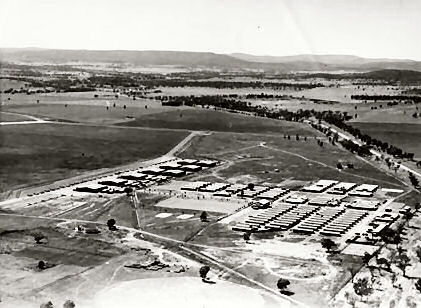 RAAF that decided what “job” you would do after
rookies. Having passed his 3 months’ ab-initio training successfully, he
was still unsure whether he would be shunted off for further training
as a pilot or
navigator or wireless operator/air gunner but after enduring the formal
selection process, he was selected for pilot training.
RAAF that decided what “job” you would do after
rookies. Having passed his 3 months’ ab-initio training successfully, he
was still unsure whether he would be shunted off for further training
as a pilot or
navigator or wireless operator/air gunner but after enduring the formal
selection process, he was selected for pilot training.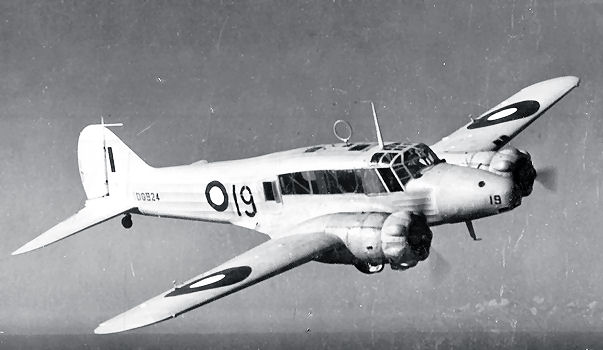 bullocking, he was surprised to be congratulated on having found the
landing ground.
bullocking, he was surprised to be congratulated on having found the
landing ground. 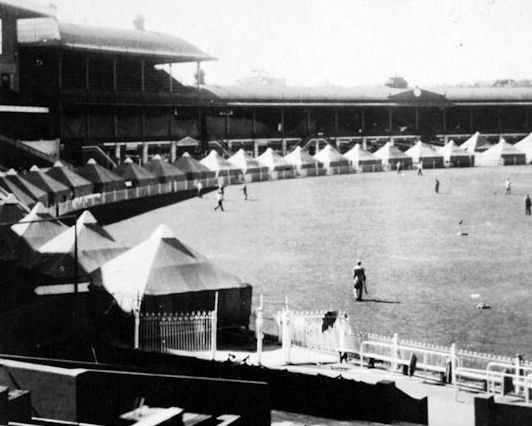 on to the next posting. David’s orders saw him
off to the Embarkation Depot at the Melbourne Cricket Ground where he
hoped he would soon be on the way to England to an
operational conversion unit but the Gods had other ideas.
on to the next posting. David’s orders saw him
off to the Embarkation Depot at the Melbourne Cricket Ground where he
hoped he would soon be on the way to England to an
operational conversion unit but the Gods had other ideas. 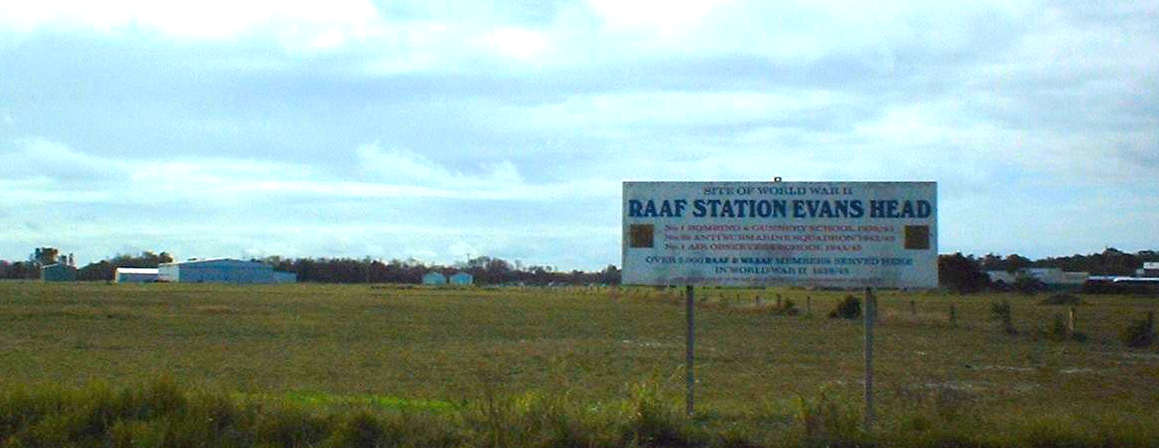
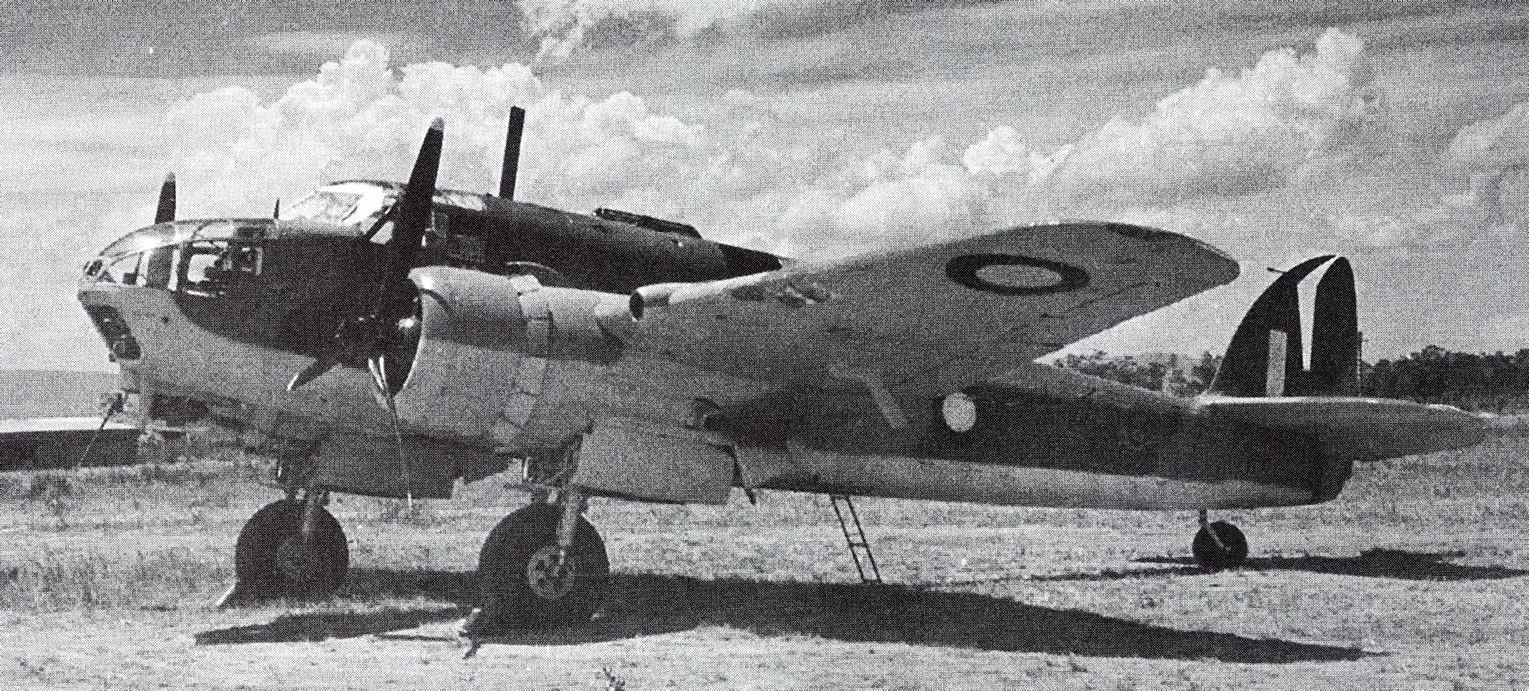
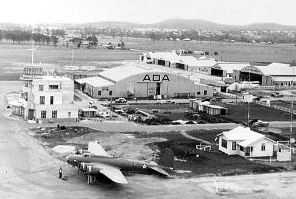
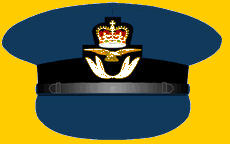 e only RAAF working aircraft in WA and his job was to ferry
Government Officials around old and now redundant wartime facilities
which were being auctioned off. Then he received a life changing
posting. On the 21 August, 1948, 8 days before his scheduled wedding to
Gail, the love of his life, he was posted for duty on the Berlin
Airlift. The marriage was brought forward then
e only RAAF working aircraft in WA and his job was to ferry
Government Officials around old and now redundant wartime facilities
which were being auctioned off. Then he received a life changing
posting. On the 21 August, 1948, 8 days before his scheduled wedding to
Gail, the love of his life, he was posted for duty on the Berlin
Airlift. The marriage was brought forward then
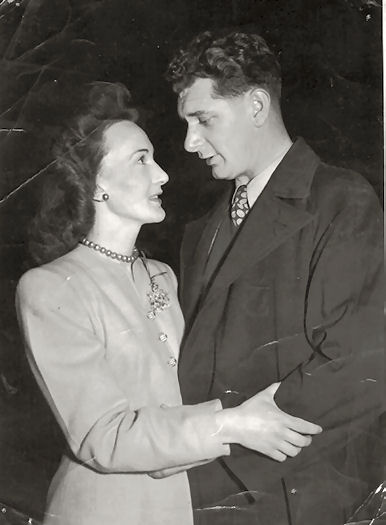 5 days later, he was off.
Back then, most people thought the blockade would last for a few weeks,
two months at the most, but were they in for a shock, it was 14 months
before David got home again. On arrival in London, David and his fellow
crew members were taken to the RAAF HQ building to be briefed on
arrangements then it was off to RAF Station Bassingbourn which was the
home of the RAF VIP Squadron. Here they were to obtain an RAF instrument
rating and to learn the standard operating procedures of the RAF and on
the 16 September, 1948, three weeks after arriving in the UK, David was
on his way to Germany.
5 days later, he was off.
Back then, most people thought the blockade would last for a few weeks,
two months at the most, but were they in for a shock, it was 14 months
before David got home again. On arrival in London, David and his fellow
crew members were taken to the RAAF HQ building to be briefed on
arrangements then it was off to RAF Station Bassingbourn which was the
home of the RAF VIP Squadron. Here they were to obtain an RAF instrument
rating and to learn the standard operating procedures of the RAF and on
the 16 September, 1948, three weeks after arriving in the UK, David was
on his way to Germany.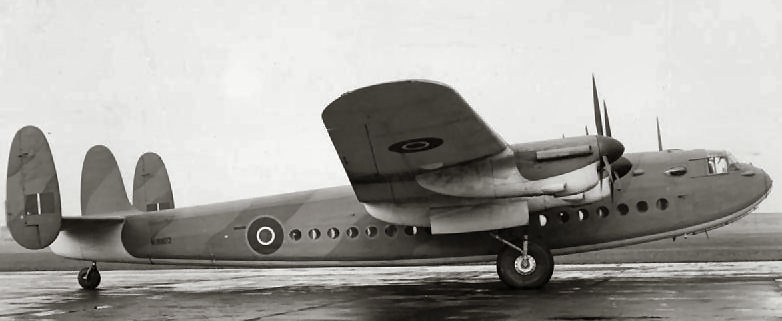
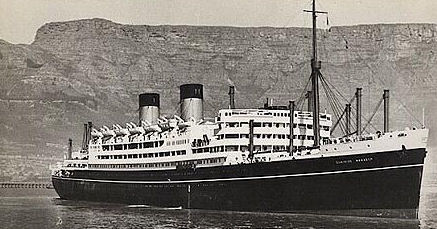
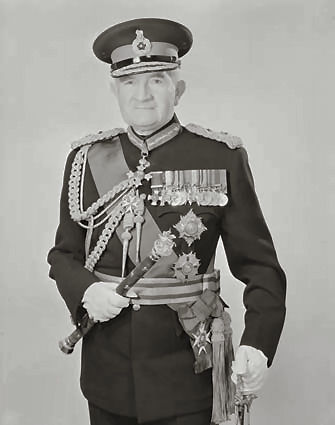 Plans were made for Queen Elizabeth and Prince
Phillip to tour Australia in 1954 and it was decided that 38 Sqn would
be heavily involved in the royal tour. David was given the job of
ensuring all 38 Sqn pilots were current with their instrument ratings.
The Queen arrived in Sydney on the 3rd
February, 1954 and 38
Sqn was tasked to fly the Royal party down to Canberra. David led six
aircraft which flew from Richmond to Sydney airport only to find Sydney
was socked in with 8/8 cloud. All aircraft carried out an instrument
approach and landing and the tour went off without a hitch.
Plans were made for Queen Elizabeth and Prince
Phillip to tour Australia in 1954 and it was decided that 38 Sqn would
be heavily involved in the royal tour. David was given the job of
ensuring all 38 Sqn pilots were current with their instrument ratings.
The Queen arrived in Sydney on the 3rd
February, 1954 and 38
Sqn was tasked to fly the Royal party down to Canberra. David led six
aircraft which flew from Richmond to Sydney airport only to find Sydney
was socked in with 8/8 cloud. All aircraft carried out an instrument
approach and landing and the tour went off without a hitch.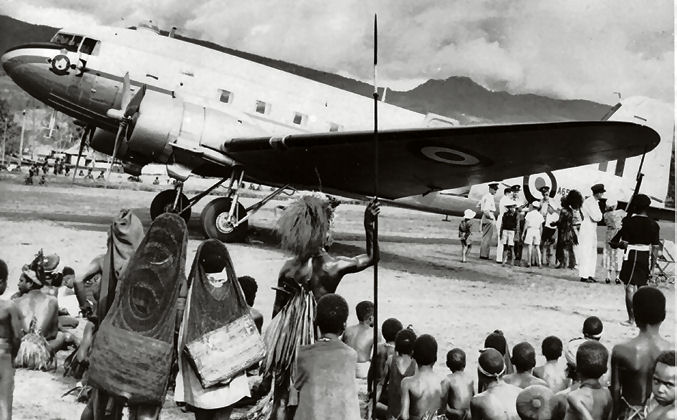
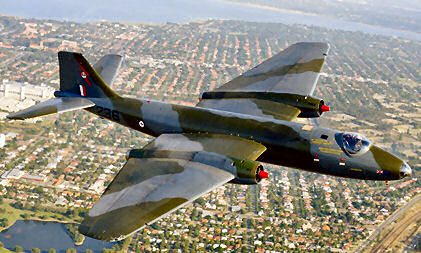 Base, but as he was
told he was to go to 2Sqn in Butterworth with the Canberras, it wasn’t
too much of a problem.
Base, but as he was
told he was to go to 2Sqn in Butterworth with the Canberras, it wasn’t
too much of a problem. 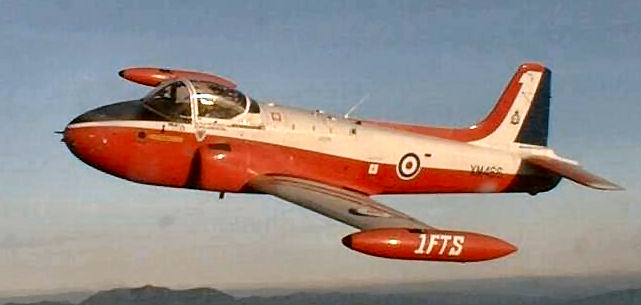 Commander at the time, was not
among them. He was tasked with finding a replacement for the aging
Vampire, the three main contenders being the British Jet Provost
(right), the Canadair CL-41 and the Italian Macchi 326. David never got
to see the Canberra or the Vampire replacement while in the job in
Canberra because in late 1964 he was posted to Washington as the
Assistant Air Attaché.
Commander at the time, was not
among them. He was tasked with finding a replacement for the aging
Vampire, the three main contenders being the British Jet Provost
(right), the Canadair CL-41 and the Italian Macchi 326. David never got
to see the Canberra or the Vampire replacement while in the job in
Canberra because in late 1964 he was posted to Washington as the
Assistant Air Attaché. 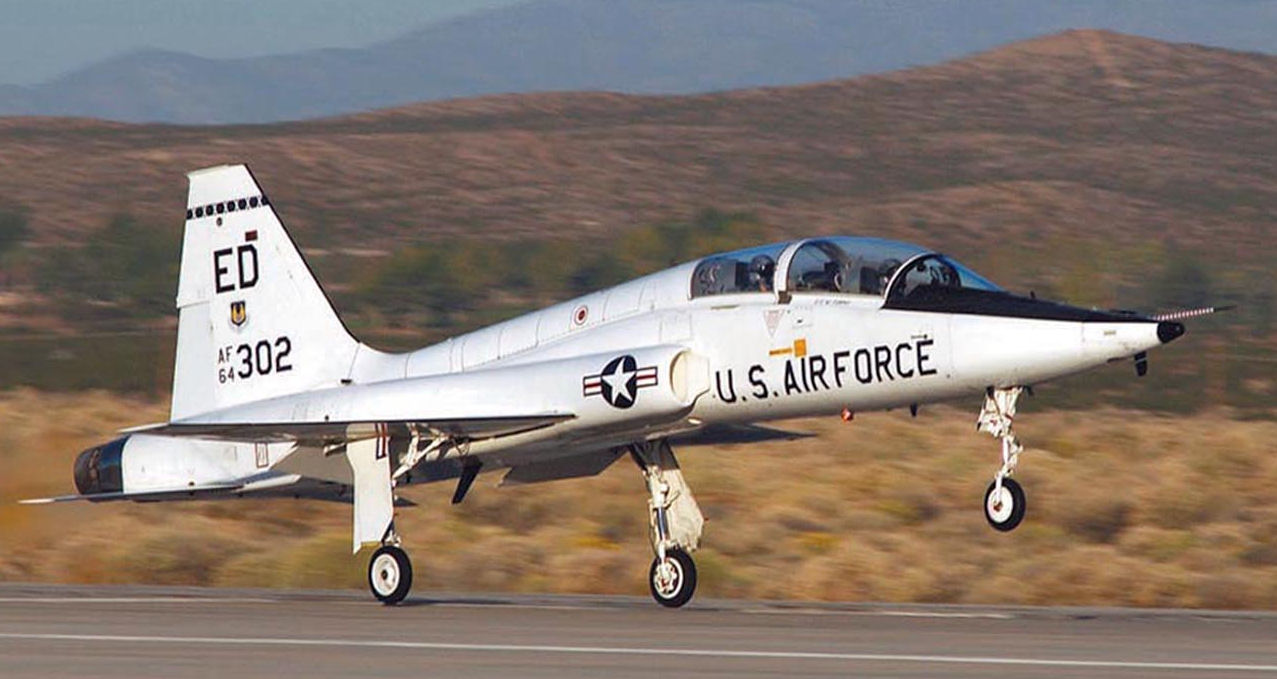 systems
still being developed. Prior to being accepted into these areas he had
to be given a clearance that would set the classification level at which
he could be briefed. He got to fly many aircraft including the T-38
twin-engine jet trainer, (right) the forerunner of the F-5 fighter
aircraft produced by Northrop and still regards the T-38 as the most
delightful jet aircraft he has ever flown, not the most capable but
definitely the most aerodynamically superb.
systems
still being developed. Prior to being accepted into these areas he had
to be given a clearance that would set the classification level at which
he could be briefed. He got to fly many aircraft including the T-38
twin-engine jet trainer, (right) the forerunner of the F-5 fighter
aircraft produced by Northrop and still regards the T-38 as the most
delightful jet aircraft he has ever flown, not the most capable but
definitely the most aerodynamically superb. 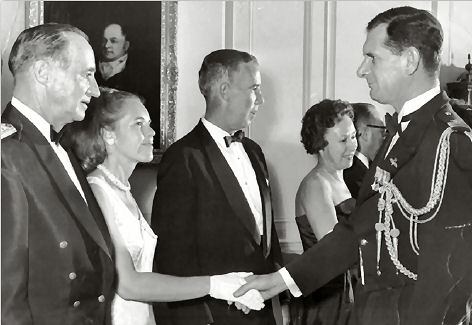
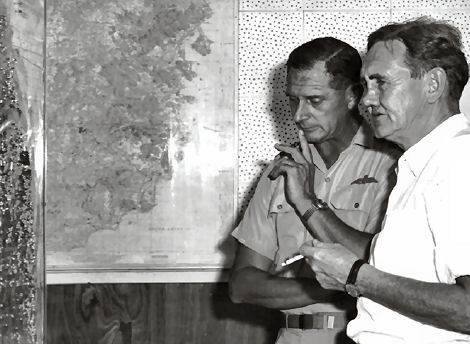 t that changed to 2 Sqn at Amberley and in June of that
year the family moved into a married quarter at Amberley where he
underwent a refresher on the Canberra.
t that changed to 2 Sqn at Amberley and in June of that
year the family moved into a married quarter at Amberley where he
underwent a refresher on the Canberra. 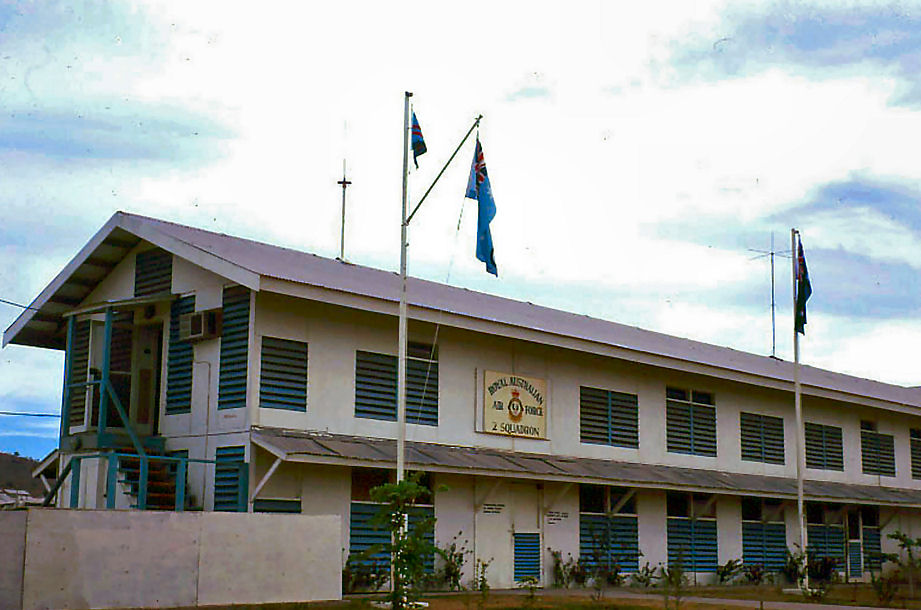
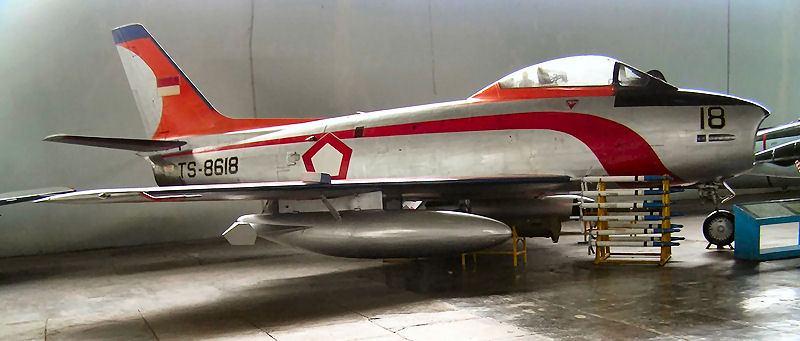 knew it, the 12 months had
flown and they were on the way home where David, now promoted to Air
Commodore, was to take up the post of Director General of Plans and
Policy.
knew it, the 12 months had
flown and they were on the way home where David, now promoted to Air
Commodore, was to take up the post of Director General of Plans and
Policy. 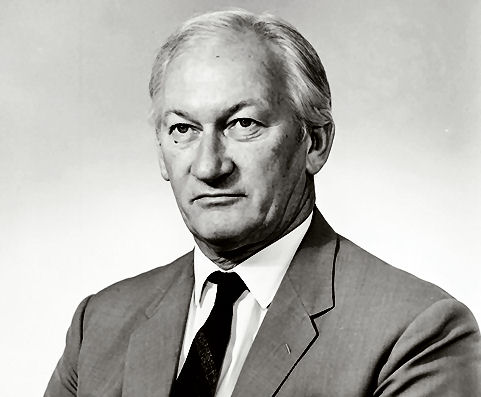 jealously guarding its own budget and powers against the others.
jealously guarding its own budget and powers against the others.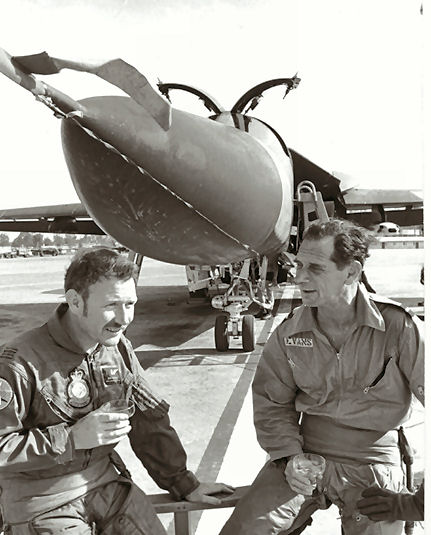
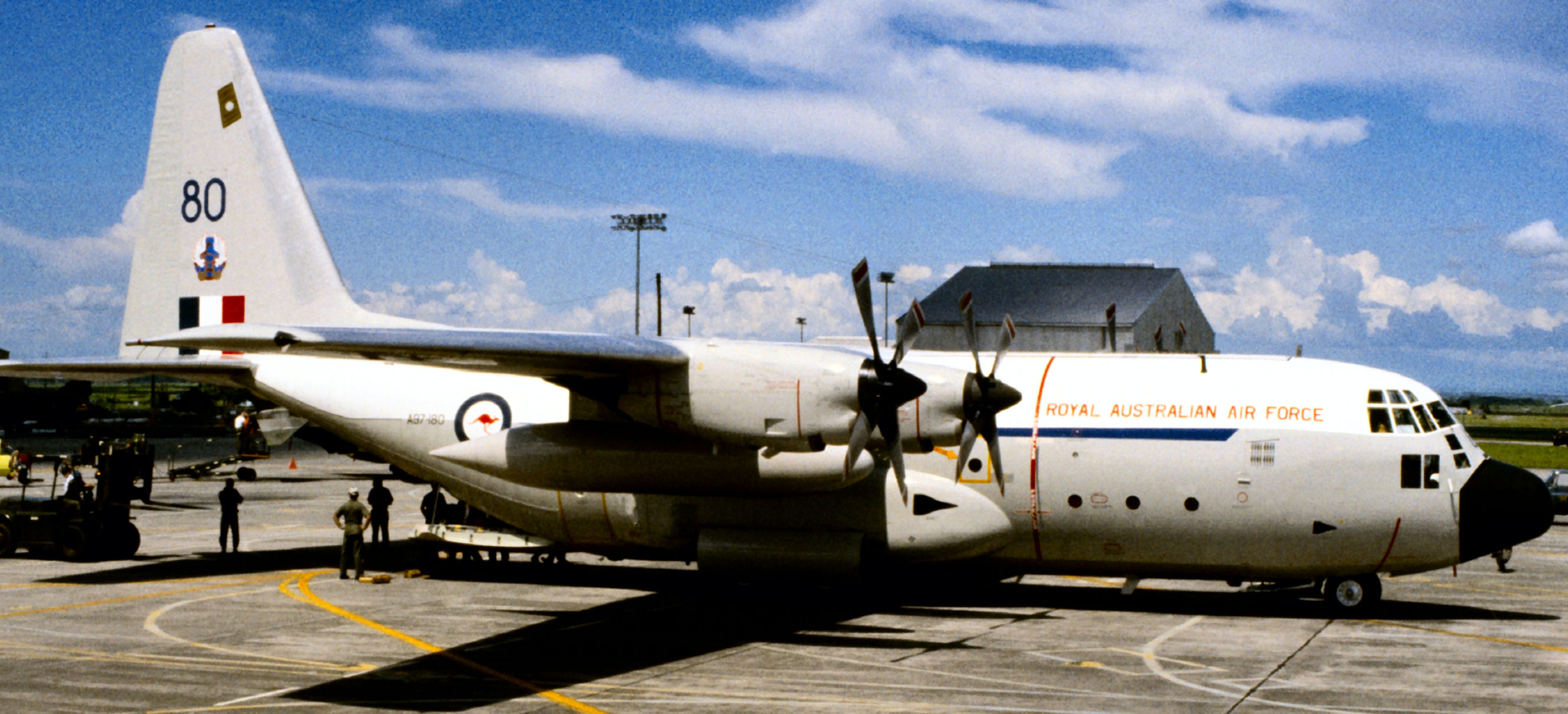 n another task. Jim Killen, the Minister for Defence contacted him
and asked if the RAAF could help hundreds of Australians stuck in
Wellington NZ due to an airline strike. At 5.00am next morning, 5 Hercs
left Australia for NZ and over the next 3 days brought home most of the
Australians. What was surprising about the exercise was the fact there
was absolutely no criticism, probably because it was successful and
warmly applauded by the passengers brought home.
n another task. Jim Killen, the Minister for Defence contacted him
and asked if the RAAF could help hundreds of Australians stuck in
Wellington NZ due to an airline strike. At 5.00am next morning, 5 Hercs
left Australia for NZ and over the next 3 days brought home most of the
Australians. What was surprising about the exercise was the fact there
was absolutely no criticism, probably because it was successful and
warmly applauded by the passengers brought home.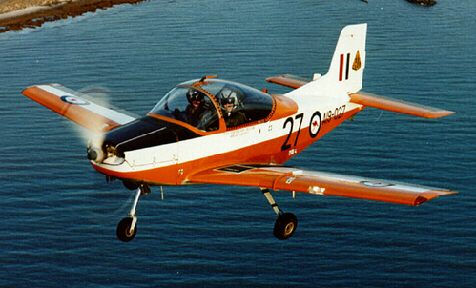 realised their funding would suffer if such a huge slice
of the Defence Budget was given to the RAAF. In the end the Prime
Minister intervened and 75 F/A-18’s were delivered to Williamtown.
realised their funding would suffer if such a huge slice
of the Defence Budget was given to the RAAF. In the end the Prime
Minister intervened and 75 F/A-18’s were delivered to Williamtown.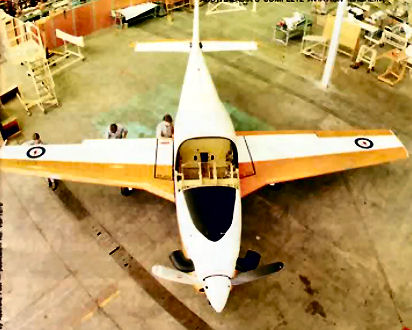 nt for two prototype aircraft, which were designated the
A-10 and given the name Wamira (right). However, due to escalating costs
and the lack of interest from overseas buyers, and although two
airframes were built, in 1985 the project was scrapped in favour of
purchasing the Pilatus PC-9. An opportunity lost!
nt for two prototype aircraft, which were designated the
A-10 and given the name Wamira (right). However, due to escalating costs
and the lack of interest from overseas buyers, and although two
airframes were built, in 1985 the project was scrapped in favour of
purchasing the Pilatus PC-9. An opportunity lost!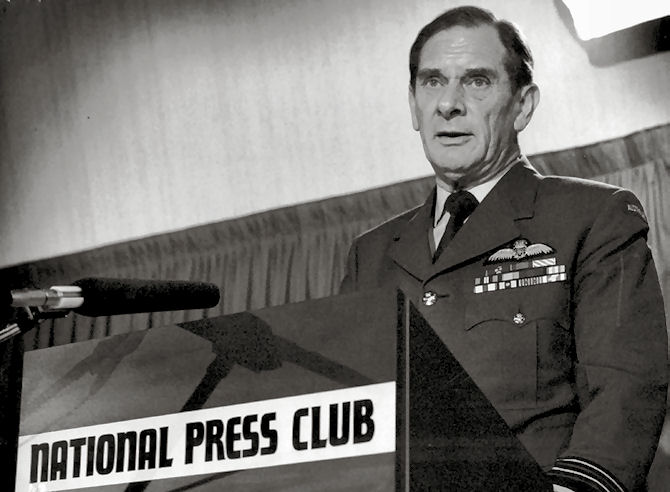 aws
on the grounds of sex, marital status or pregnancy. The Military’s
living-in policy which required unmarried personnel to live in barracks
on base was suddenly illegal. No longer could there be a different
requirement or expectation that single people would live on base any
more than a married person would be required to do so.
aws
on the grounds of sex, marital status or pregnancy. The Military’s
living-in policy which required unmarried personnel to live in barracks
on base was suddenly illegal. No longer could there be a different
requirement or expectation that single people would live on base any
more than a married person would be required to do so. 